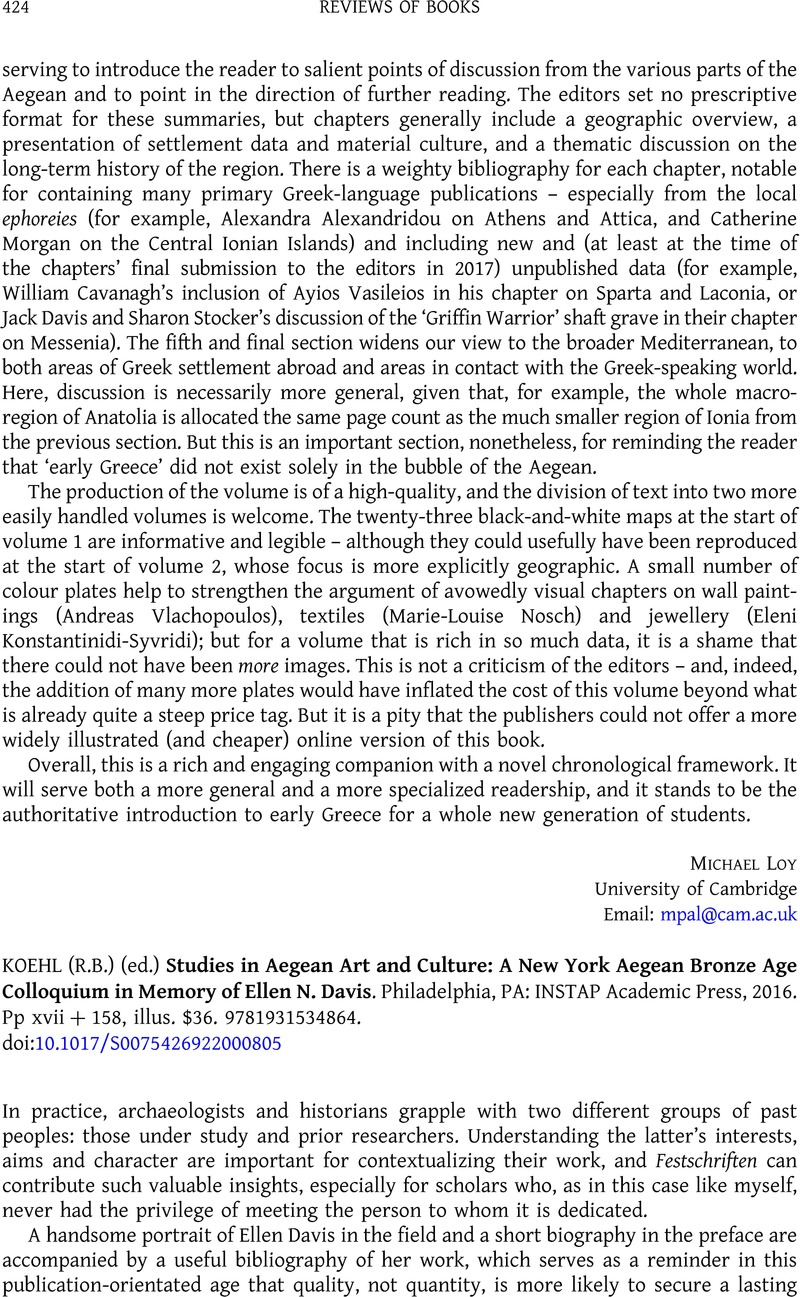No CrossRef data available.
Article contents
(R.B.) KOEHL (ed.) Studies in Aegean Art and Culture: A New York Aegean Bronze Age Colloquium in Memory of Ellen N. Davis. Philadelphia, PA: INSTAP Academic Press, 2016. Pp xvii + 158, illus. $36. 9781931534864.
Review products
(R.B.) KOEHL (ed.) Studies in Aegean Art and Culture: A New York Aegean Bronze Age Colloquium in Memory of Ellen N. Davis. Philadelphia, PA: INSTAP Academic Press, 2016. Pp xvii + 158, illus. $36. 9781931534864.
Part of:
Art and archaeology
Published online by Cambridge University Press: 11 April 2023
Abstract
An abstract is not available for this content so a preview has been provided. Please use the Get access link above for information on how to access this content.

- Type
- Reviews of Books: Archaeology
- Information
- Copyright
- © The Author(s), 2023. Published by Cambridge University Press on behalf of the Society for the Promotion of Hellenic Studies


